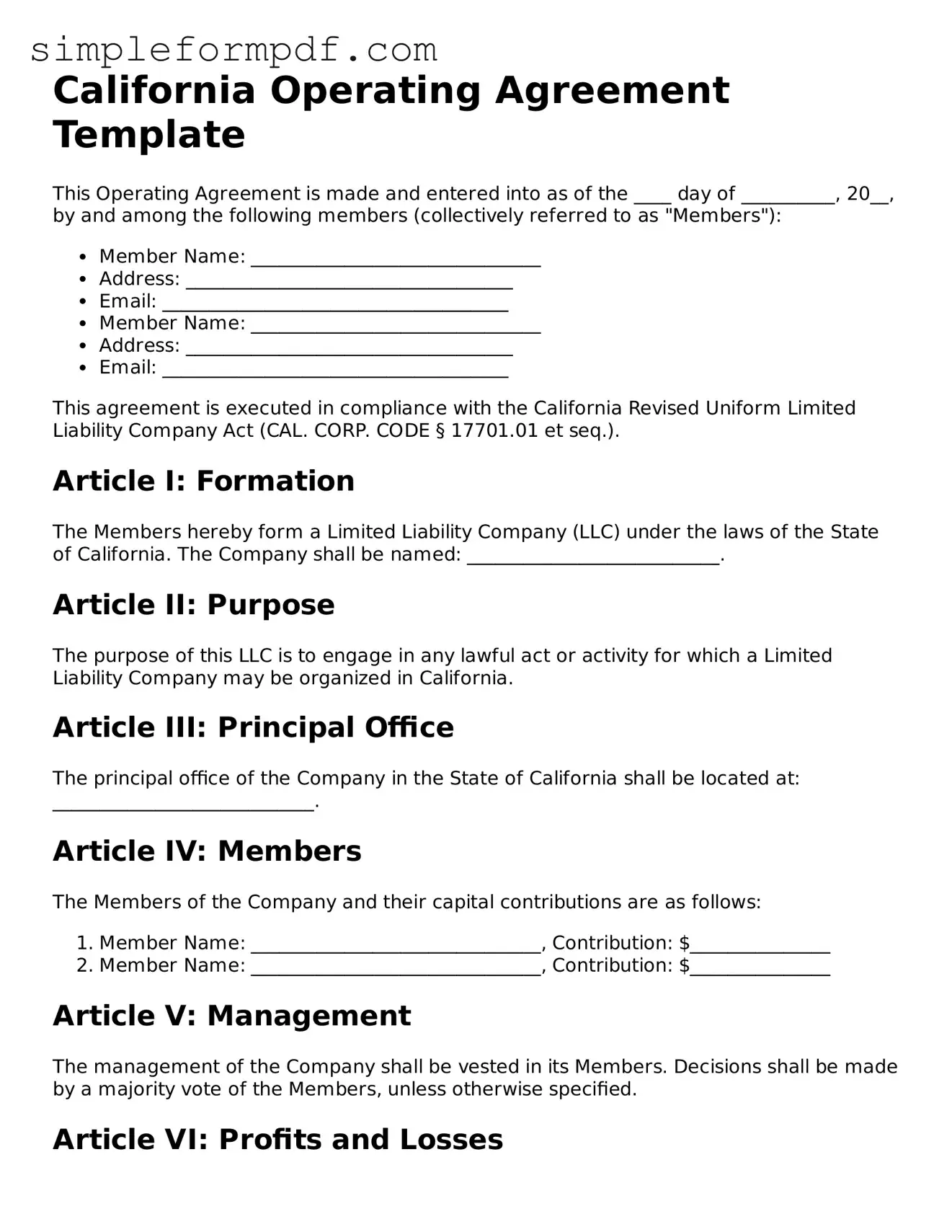California Operating Agreement Template
This Operating Agreement is made and entered into as of the ____ day of __________, 20__, by and among the following members (collectively referred to as "Members"):
- Member Name: _______________________________
- Address: ___________________________________
- Email: _____________________________________
- Member Name: _______________________________
- Address: ___________________________________
- Email: _____________________________________
This agreement is executed in compliance with the California Revised Uniform Limited Liability Company Act (CAL. CORP. CODE § 17701.01 et seq.).
Article I: Formation
The Members hereby form a Limited Liability Company (LLC) under the laws of the State of California. The Company shall be named: ___________________________.
Article II: Purpose
The purpose of this LLC is to engage in any lawful act or activity for which a Limited Liability Company may be organized in California.
Article III: Principal Office
The principal office of the Company in the State of California shall be located at: ____________________________.
Article IV: Members
The Members of the Company and their capital contributions are as follows:
- Member Name: _______________________________, Contribution: $_______________
- Member Name: _______________________________, Contribution: $_______________
Article V: Management
The management of the Company shall be vested in its Members. Decisions shall be made by a majority vote of the Members, unless otherwise specified.
Article VI: Profits and Losses
Profits and losses shall be allocated to the Members in proportion to their respective capital contributions as stated in Article IV.
Article VII: Distributions
Distributions shall be made to the Members at the times and in the amounts determined by the Members.
Article VIII: Amendments
This Operating Agreement may be amended only with the written consent of all Members.
Article IX: Governing Law
This Agreement shall be governed by and construed in accordance with the laws of the State of California.
IN WITNESS WHEREOF
The Members have executed this Operating Agreement as of the day and year first above written.
_______________________________
Member Name
_______________________________
Member Name
